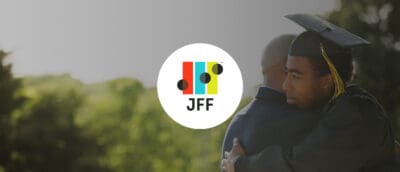Like most people across country, those of us in JFF’s California office are worried about the high school graduating class of 2020. How will the COVID-19 pandemic change their lives? How will they graduate from an interrupted school year, and even if that is settled, what should they do next?
The California State University system made an early decision to hold classes online in the fall, but many colleges haven’t announced what they will do. Some have said they will invite students back to campus, even though it’s unclear how they can do that safely.
Plans Upended
As a result, students have been left in the lurch, wondering what to do about college. Some have decided to save their tuition dollars and forgo school for now instead of taking a chance on online learning or an on-campus—but socially distanced—experience. High school graduates who had no college plans are also affected: They are entering a daunting job market where they will compete for work with upward of 40 million newly unemployed adults.
We need to help young people, and in so doing build something better for those who follow them.
This shock to the California and U.S. economies has magnified the inequality in our education systems and exposed the fact that educational outcomes often do not align with the needs of the labor market.




